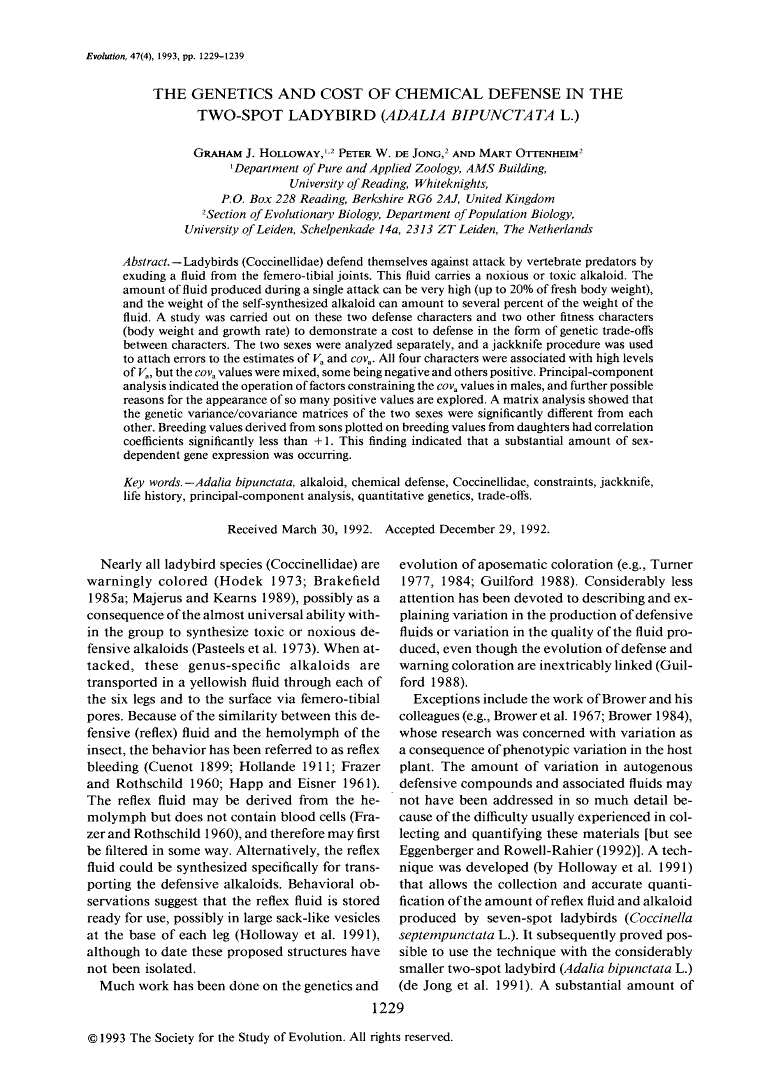You are viewing the first page/citation. Full-text
access may be available if you are affiliated with a participating library or
publisher.
Check access
options or
login
if you have an account.
The Genetics and Cost of Chemical Defense in the Two-Spot
Ladybird (Adalia bipunctata L.)
Graham J. Holloway, Peter W. de Jong and Mart Ottenheim
Evolution
Vol. 47, No. 4 (Aug., 1993), pp.
1229-1239
(article consists of 11 pages)
Stable URL:
http://www.jstor.org/stable/2409988
Evolution © 1993 Society
for the Study of Evolution
Abstract
Ladybirds (Coccinellidae) defend themselves against attack by
vertebrate predators by exuding a fluid from the femero-tibial joints. This
fluid carries a noxious or toxic alkaloid. The amount of fluid produced during a
single attack can be very high (up to 20% of fresh body weight), and the weight
of the self-synthesized alkaloid can amount to several percent of the weight of
the fluid. A study was carried out on these two defense characters and two other
fitness characters (body weight and growth rate) to demonstrate a cost to
defense in the form of genetic trade-offs between characters. The two sexes were
analyzed separately, and a jackknife procedure was used to attach errors to the
estimates of Va and cova. All four characters were associated with high levels
of Va, but the cova values were mixed, some being negative and others positive.
Principal-component analysis indicated the operation of factors constraining the
cova values in males, and further possible reasons for the appearance of so many
positive values are explored. A matrix analysis showed that the genetic
variance/covariance matrices of the two sexes were significantly different from
each other. Breeding values derived from sons plotted on breeding values from
daughters had correlation coefficients significantly less than +1. This finding
indicated that a substantial amount of sex-dependent gene expression was
occurring.

